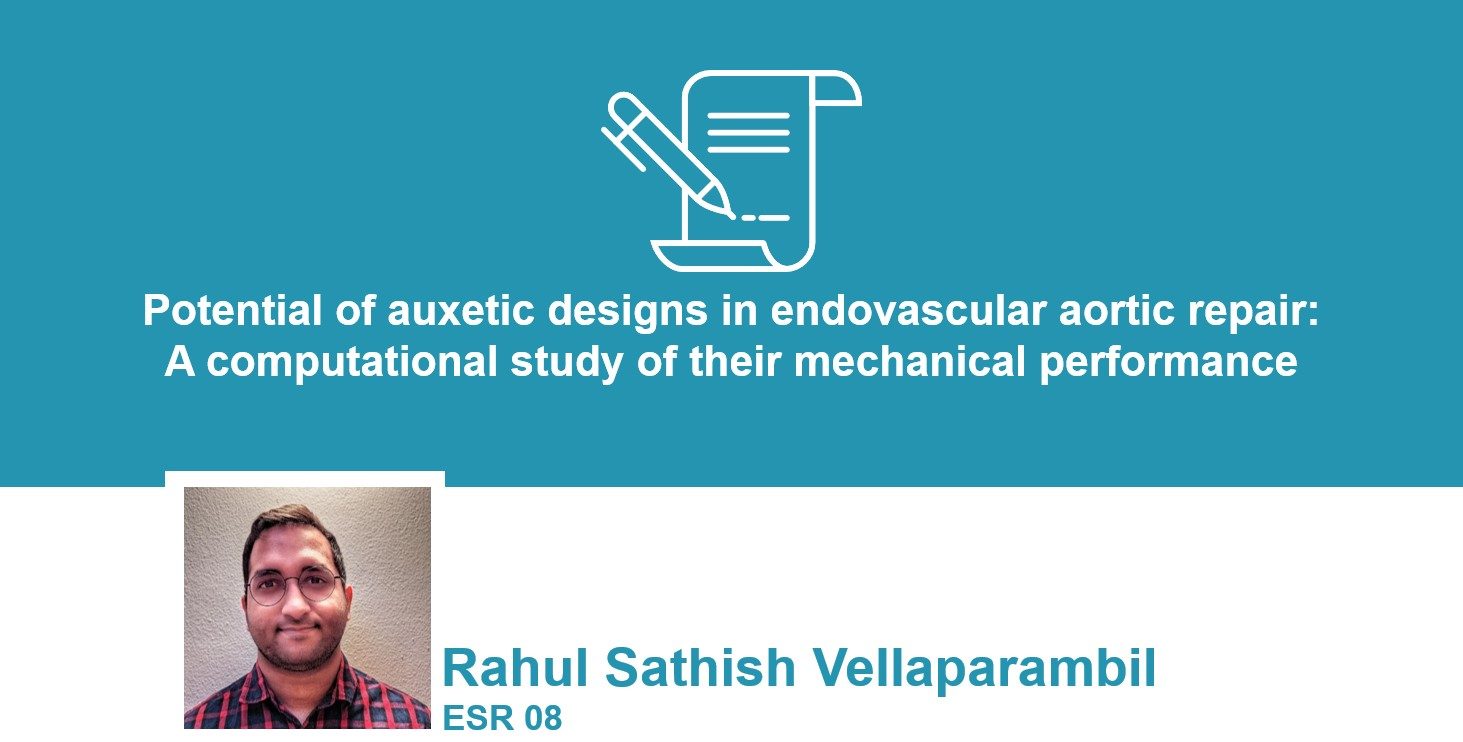A new MeDiTATe project publication: “Potential of auxetic designs in endovascular aortic repair: A computational study of their mechanical performance”

Rahul Sathish Vellaparambil, ESR 08 of the MeDiTATe project, published the paper titled Potential of auxetic designs in endovascular aortic repair: A computational study of their mechanical performance in the Journal of the Mechanical Behavior of Biomedical Materials.
The work was developed in collaboration with Woo-Suck Han and Stéphane Avril from Mines Saint-Étienne and Pierluigi Di Giovanni from the R&D department of HSL.
The paper, whose abstract is reported in the following lines, is available at this link.
With the rising popularity of endovascular aortic repair (EVAR) for aortic aneurysms and dissections, there is a crucial need for investigating the delayed appearance of post-EVAR complications such as stent-graft kinking, fracture and migration respectively. These complications have been noted to be influenced by the radial stiffness and bending flexibility attributes of stent-grafts. Auxetic designs with negative Poisson’s ratio offer interesting advantages such as enhanced fracture toughness, superior indentation resistance and adaptive stiffness in response to intricate morphology for stenting applications over conventional stent designs. The objective of this study is to propose different auxetic stent candidates and to compare their mechanical performance with two conventional stent candidates for endovascular applications using numerical simulation through crimp/crushing tests for their radial stiffness and three-point bending/kinking tests for their flexibility, respectively. The results demonstrate that the novel hybrid auxetic designs (CRE and CSTAR) possess the best trade-off between radial stiffness and bending flexibility characteristics among all candidates for stent-graft applications.
